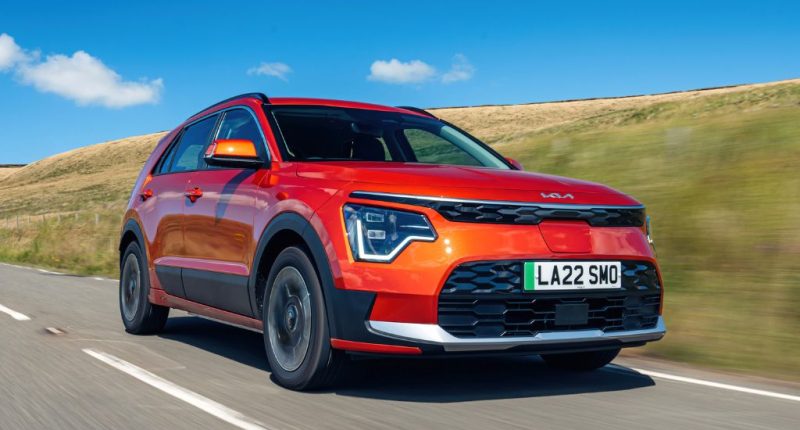A pure battery-powered Niro could not come a moment too soon for Kia as forecasts by the South Korean manufacturer suggest that some 60 per cent of total sales will be EV, followed by mild hybrid (35%) and plug-in hybrid (5%).
Going full EV with a car that strikes you as having arrived from another planet due to is edgy and eye-catching styling seems like a logical combination, especially as real-world range is quoted at 285-miles – a modest improvement on before at only four miles. Sometimes, progress takes time. On paper, it compares favourably to other suitably appealing zero-emission offerings. Renault’s Megane E-Tech promises to cover distances close to 280-miles and MG’s ZS EV Long Range is only good for 271-miles.
Although the all-new Niro is visually more arresting than its predecessor, the two actually share the same hardware underneath their very different bodies. Running a 65kWh pack, 45 minutes is required to push energy levels up from 10% to 80% – and if you are relying on a home or workplace wallbox rated at 7.2kWh, set aside nine-and-a-half hours to achieve a full charge. As far as cost goes, £20 should cover it – a significant saving compared to £75 for a full tank of petrol for the HEV.
As a daily driver, the Niro EV has plenty to offer, particularly when it comes to scavenging energy when you come off the accelerator. This process is made up of five brake regeneration modes that are selected via the two, steering wheel-mounted paddles.
At the gentlest setting you free coast and with ‘ipedal’ activated – the most aggressive and efficient way to recoup kilowatts – you can take advantage of one-pedal driving, so by observing a watching brief of the road ahead, you never really have to dab the brakes .
Drivers can also choose from three modes: in ‘Eco’ the Niro EV is a potent run-around, eating up the road before it. This intensifies in ‘Normal’ at the expense of losing six miles of battery range and piques in ‘Sport’ where another six more miles have to be sacrificed.
With the battery positioned slap bang in the space that exists between the front and rear axle, this gives the Niro EV a glued feel through corners, the weight keeping the Continental rubber buried on the road. It is a surprisingly direct and capable car on twisty roads, responding positively to gradual inputs via responsive steering that relays sufficient information to paint a clear picture of what the front wheels are doing. A softly sprung suspension delivers a mostly benign ride over the usual mix of lumps and bumps at higher speeds and does a commendable job of neutralising nauseating wallow.
Sold in just three trims – ‘2’, ‘3’ and ‘4’ – this incredibly stylish small SUV is set apart by compact dimensions (even though it is 45mm longer and 20mm wider this time around). There are obvious hints of the EV6 and Sportage on show, but neither of those get the Niro’s ‘sideblades’ – a feature incorporated into the C-pillars that smooth out the air and reduce drag to 0.29.
As for which model represents best value for money, it is hard to look past ‘3’ (£39,545); gloss black cladding is on show around the wheel-arches and radiator grille, while artificial leather is used to upholster the seats. A larger 10.25-inch colour touchscreen joins the party inside the car’s spacious and practical cabin.
USB charge ports integrated into the shoulder of the driver and front passenger seats that have individual aeroplane seat-back pockets, a drop-down centre arm rest with cup holders, and even a three-pin socket to keep laptops and other larger electrical devised powered up will be appreciated by those travelling in the back where there’s enough wriggle room for three adults sitting side-by-side.









